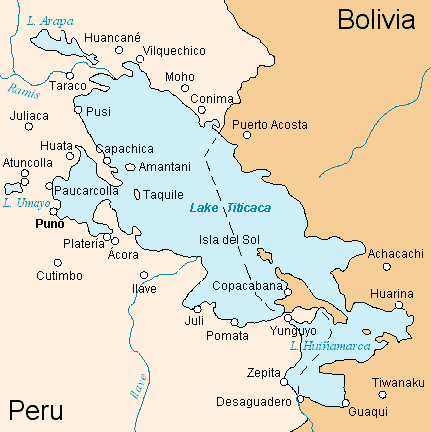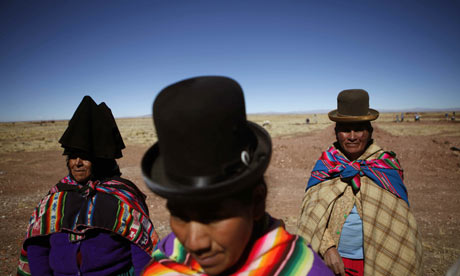I don't know if any of you are paying attention to all of the hoopla surrounding quinoa these days, but there have been a number of articles in various newspapers and magazines arguing the sociological, economic and environmental effects of quinoa production in Peru and Bolivia. The New York Times published an article stating that the rising global demand for quinoa was inflating the price so that the indigenous populations couldn't afford it any longer. This had them turning to cheaper foods, and was contributing to the decline of their historical culture. Of course, I believed every word. I mean, it's the NYT for cripes sake!
Other articles were written in dispute of this. Yes, I googled it. But I read a number of different pieces, which offered vastly differing opinions. I'm riding the middle, because I don't want to start a fight with anyone. (although I can't imagine anyone wanting to punch me over quinoa)
Here's what seems to be going on down on the Altiplano-the high plains region of the Andes Mountains. This is the area of the world that seems most suited to the growth of quinoa. It is some harsh territory up there, but somehow, this hardy plant thrives. The issues that are being raised are the following:
The upside of the demand is that they are able to improve a bit on their lifestyle. Schools are better, their houses are a little nicer. I mean, we're not talking about these people erecting McMansions or anything. Just a little more mud on the hut. And my guess is there's not much cell phone service up there, so it just doesn't make sense to be holding the new iPhone 6. The worst thing that is happening is that the younger generations are less inclined to have quinoa be the center of their diet.
Then there are the llamas. It seems that many llama farmers are selling off their herds to make room to grow more quinoa. Andean people eat llama. (does NOT taste like chicken, I would guess). There is a symbiotic relationship between llama herding and quinoa farming, rotating the land to keep it fertile. One of the greatest sources of pride regarding Andean quinoa is that it is completely organic.If they change the farming rotation, then they would have to use fertilizer. So, my Andean friends, let's keep those llamas coming!
Here is a llama for you:

Apparently, attempts are being made in other parts of the world to grow quinoa. Some is now produced in the Pacific Northwest, and they are trying in Britain and the Middle East. But nowhere is there the perfect storm of altitude, weather and sheer space that is found in the Altiplano. (for you non-Spanish speakers, that means "high plain") There is no agribusiness evil giant controlling the farms, no GMOs (and you ALL know how I feel about GMOs). It is all controlled by producer's associations and farmer's cooperatives. There is government support, both politically and financially. So let's keep buying fair trade quinoa, people. I know it's kind of pricey, but if you've read my blog entry all about its nutritional content, you will know that it is an almost perfect food. Heck, I just bought a Greek yogurt from Sheetz the other day that had quinoa in it! It was like having pop rocks in your breakfast. But talk about a protein packed way to start a day!
Eat Quinoa. Save a Llama.
And here's a picture of Lake Titicaca. It's found between Bolivia and Peru. (The Animaniacs taught me that) Why did I put this in? Well, like Yakko, Wacko and Dot, I just like saying its name-TITICACA!

